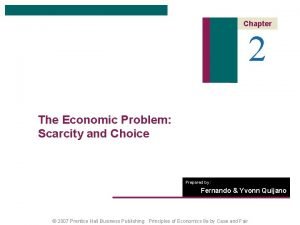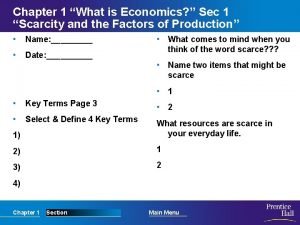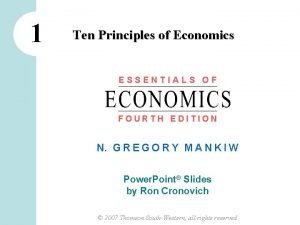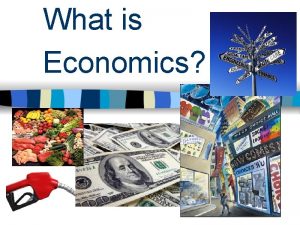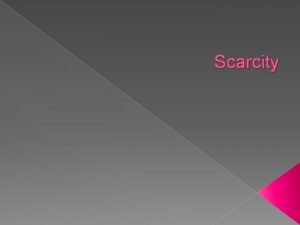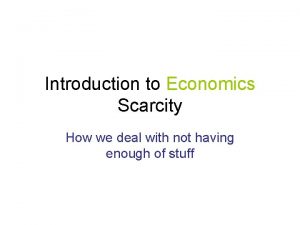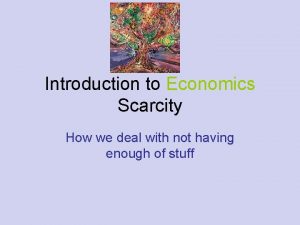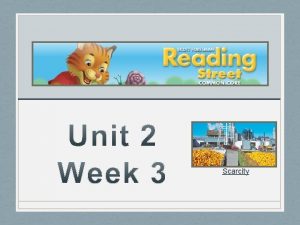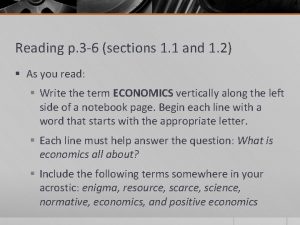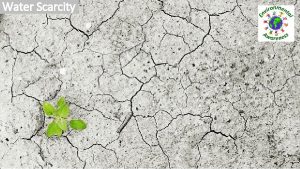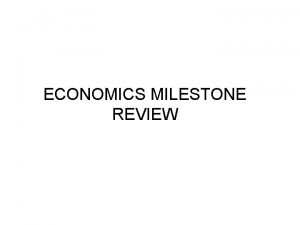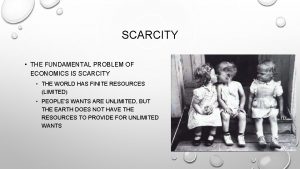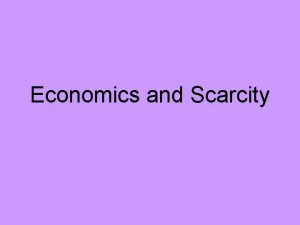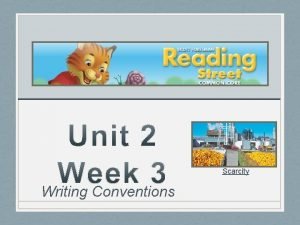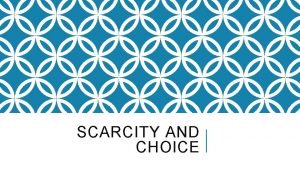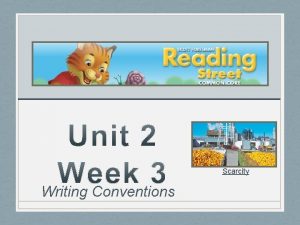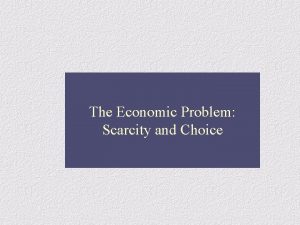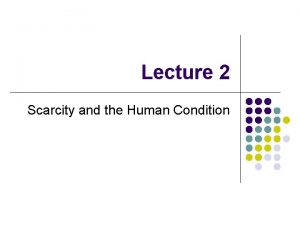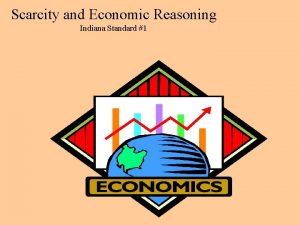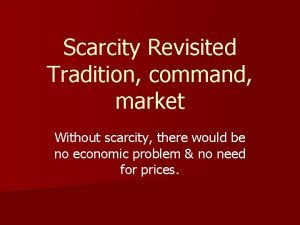What is Economics Chapter One SCARCITY AND THE

















- Slides: 17

What is Economics? Chapter One

SCARCITY AND THE FACTORS OF PRODUCTION Section One

Make a list of 5 things (goods) that you need everyday. Now, make a list of 5 things (goods) you want, but you do not have. Why do you not have all the things that you want? There is an unlimited amount of needs and wants, but only a limited number of resources available to get them. Therefore, people must make choices about what goods and services they have, and the ones they do without. This is what economics is about.

§ § § People always have to make decisions about how to meet their needs and wants. A need is something people must have to survive, like air, food, and shelter. A want is something that people would like to have but is not necessary for survival. Economics is the study of how people make choices to satisfy their needs and wants. People have to make such choices because of scarcity, the limited amounts of resources to meet unlimited desires.

§ § § Goods are objects, like cars and clothes. Services are actions that people do for others, such as teaching. A shortage occurs when a good or service is unavailable. Shortages occur when people have trouble supplying goods and services at current prices. Shortages may occur because of situations like war or drought. They may end quickly or last a long time. Economists call the resources used to make goods and services factors of production. There are three types: land, labor, and capital.

§ § Land includes natural resources like coal, water, and forests. Labor is work for which people receive pay. Capital is a human-made resource used to produce other goods and services. Objects made by people, like buildings and tools, are called physical capital. Human capital refers to the knowledge and skills people gain from study and experience. Entrepreneurs are people who put together land, labor, and capital to create new businesses.

OPPORTUNITY COST Section Two

§ § § When making decisions people face trade-offs, or alternatives we give up when we choose one course of action over another. EVERY decision we make involves a trade-off. A person who chooses to spend more time at work has less time to spend at home. A business that uses all its factories to build chairs cannot build tables at the same time. Economists use the term guns or butter to describe the trade-off a country faces over producing consumer goods or military goods.

§ § § A person who chooses one alternative gives up other alternatives. The most desirable alternative given up is called the opportunity cost. For example, suppose you have to choose between sleeping late or getting up early to study for a test. The opportunity cost of extra study time is less sleep. The opportunity cost of more sleep is less study time. Decisions also involve thinking at the margin. This means deciding about adding or subtracting one unit of a resource, such as one hour of sleep.

PRODUCTION POSSIBILITIES CURVES Section Three

Economists use graphs that are called production possibilities curves to show alternative ways of using a country's resources. For example, an economist might want to examine the production of shoes and watermelons. A production possibilities curve can show the number of shoes produced is affected by the number of watermelons grown. As the number of watermelons produced is increased the number of shoes produced will decrease.

§ § This happens because land is scarce, and more land for watermelon farms means less land for shoe factories. Similarly, as more shoes are produced less resources are available to grow watermelons. Efficiency means an economy is using resources in such a way as to maximize the production of goods and services. In the given example, efficiency would mean that the most watermelons and shoes possible are being produced.

The line on the curve that shows the maximum possible production is called the production possibilities frontier. If factory workers and farmers lost their jobs, fewer shoes and watermelons would be produced. In this case the economy would suffer from underutilization, or using fewer resources than it is capable of using.

A country's resources are always changing. In the future, resources may increase, causing the economy to grow. If more labor becomes available, there will be more workers to produce more goods. Improvements in technology, or know-how, will also help the economy grow. This growth can be shown by a shift to the right on the production possibilities frontier.

Graph the following information: Cars 0 100 200 300 Computers 1, 000 750 500 0

Create a monthly budget if you were living on your own. List all expenses and the amount you plan to spend per month. Ex: Rent, car payment, insurance, gasoline, phone bill, cable bill, groceries, entertainment, etc. Total up your expenses. This is how much income you need to pay your bills.

Now, use the following categories and numbers… Rent (including utilities): $800 § Insurance: $100 § Gas: $100 § Cell Phone Bill: $65 § Cable Bill: $75 § Internet: $25 § Groceries: $200 § Entertainment: ? ? ? § Savings: ? ? ? **You only have $1200 a month spend §
 Shortages occur when
Shortages occur when Relationship between economics and scarcity
Relationship between economics and scarcity Definition of scarcity in economics
Definition of scarcity in economics Explain scarcity and choice
Explain scarcity and choice How do economists use the phrase guns or butter
How do economists use the phrase guns or butter Economics and business economics maastricht
Economics and business economics maastricht Scarcity, choice and opportunity cost example
Scarcity, choice and opportunity cost example One face one voice one habit and two persons
One face one voice one habit and two persons Chapter 1 ten principles of economics
Chapter 1 ten principles of economics One of the ten principles of economics in chapter 1
One of the ten principles of economics in chapter 1 Non mathematical economics
Non mathematical economics Economics
Economics Scarcity lesson plan
Scarcity lesson plan Opportunity costs def
Opportunity costs def Causes of scarcity
Causes of scarcity Scarcity in a sentence
Scarcity in a sentence Scarcity forces tradeoffs symbol
Scarcity forces tradeoffs symbol Entrepreneurship 3209
Entrepreneurship 3209



